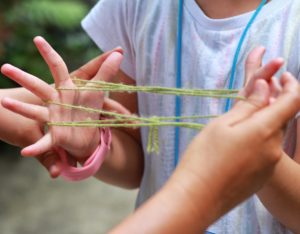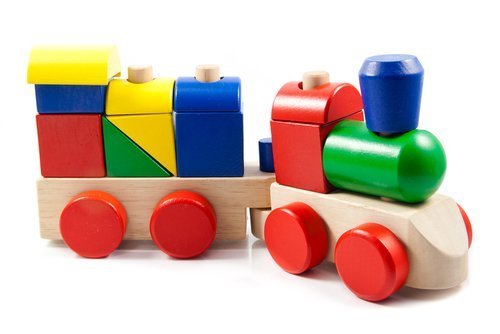Traditional playground games around the world

Here at Andiamo! we love a good game or two, whether that’s quizzes and word games on our lunch break, or video games after work. Things can get quite competitive!
We also hold a fond place in our hearts for traditional playground games and were curious about what other playground games we might find around the globe. We hope you enjoy our short list. Some are nostalgic, and some are silly, but all are good fun!
1. Cat’s Cradle (UK)
Many a child has been equally fascinated with and frustrated by Cat’s Cradle. Shoelaces, elastic, bits of ribbon – you name it, it can be transformed into an endless series of string figures and become the source of hours of fun. You probably know the envelope and the cradle, but did you know that many other cultures also play this game, and make different shapes, like weather patterns, fish, and animals?
2. Leapfrog (and other animals!) (various)
We’ve all pretended to be a leaping frog, yes, but have you ever considered…
…that you might have been leaping over a cow in the Philippines?
…or that you might have been a goat leaping over a mountain in China?
…or that you might have been a horse in Italy?
3. La Barbichette (France)
Most of us have taken part in a staring contest, but if you were in a French playground, you might find yourself playing La Barbichette (or Goatee Game)! This is a ‘try not to laugh’ contest between two people who have to hold on to each other’s chin. The loser gets a playful slap!
4. Strega comanda colore (Italy)
This is a game played in Italy. The name means “witch calls colours” and is a kind of tag or chase game. One player, the ‘witch’, calls out different colours one by one. The other players then have to run and touch something that is the same colour that the witch called. At the same time as they are running and finding a coloured object, the witch tries to catch one of them, who then takes the role of the witch.
5. Agalmata (Greece)
How is your classical Greek statue knowledge? You’ll need to brush up if you want to have a chance at winning a game of agalmata, which is Greek for ‘statues’! One person is ‘it’ and counts as high as they want, and when they shout ‘agalmata’ everyone needs to make a statue pose – it has to be a pose which copies a real statue, rather than a made-up statue pose or just standing still where they are. If the statues wobble or laugh when the person who is ‘it’ inspects them, they’re out!
6. Beigoma (Japan)
Have you ever tried playing with a wooden spinning top? Then you might enjoy having a go at beigoma! This is a traditional Japanese version made from metal and engraved with ornate characters. Just like the wooden kind, you use a cord to ‘whip’ them and start them off spinning. Will yours be the last one standing?
7. 毽子 (jiàn zi) (China)
Keepie-uppie is a great way to improve your co-ordination and reflexes. If you’re good at keepie-uppie with a football, you’ll probably have a good chance at succeeding at jiàn zi, or ‘shuttlecock’, which is a Chinese game. Instead of a ball, players of jiàn zi use a weighted puck which is decorated with bright feathers. The aim of the game is to keep the shuttlecock in the air as long as you can, using anything apart from your hands – much like keepie-uppie!
8. Koekhappen (Netherlands)
You’ve probably bobbed for apples on Halloween, and the idea of Koekhappen (‘bites of cake’) is similar. Instead of apples, slices of cake are tied to strings and dangled within eating range of the players. Whoever eats their cake the fastest, wins! (This is probably more of a party game than a playground game, but we thought it sounded delicious, so the game made it on to our list all the same.)
9. Jogo do lencinho (Portugal)
Jogo do lencinho, or ‘handkerchief game’, is a Portuguese playground game. These days I’m not sure how common it is for children to carry hankies, but it could be played with a paper tissue, bit of ribbon or fabric – anything that you can drop without it making a noise when it hits the floor, really.
It’s similar to Duck, Duck, Goose – children sit in a circle and sing a song, while someone who is ‘on’ walks around the outside of the circle. The person who is on chooses one of the seated players and drops the ‘handkerchief’ behind them. If the player who is sat down notices, they have to get up and chase the ‘dropper’ around the circle and catch them before they reach the empty space in the circle and sit down in it. A bit more subtle than Duck, Duck, Goose, as the person who’s sat down might not even notice that the ‘hankie’ is behind them!
10. Halászás (Hungary)
This Hungarian game means ‘fishing’ and is a kind of tag. To begin with, only one child is the ‘fisherman’, and must catch a ‘fish’ (one of the other children in the game running around). Once one child is caught, they have to hold hands with the ‘fisherman’ and catch another fish. You can imagine, once there is a long chain of players the ‘net’ is much harder to run away from!
We hope you enjoyed our list of playground games around the world and that you might even be inspired to try out one of these games yourself! For most of them you don’t need any kind of special equipment, so they’re free or inexpensive and easy to play.
We really enjoy working on Toy and Game translations and would love to help with any of your translation needs. For a brief overview of what we offer, please visit our toy and games page or get in touch.






